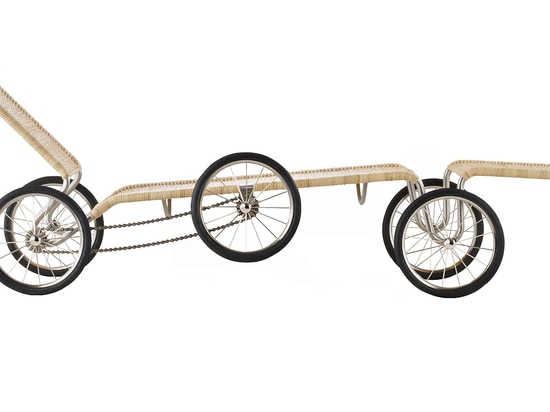
#Product Trends
new stool-series by Joop Couwenberg
It all started with an image that would evoke Caspar David Friedrich, were it not firmly rooted in modernity: young Dutch artist Joop Couwenberg had observed fishermen
gathering wastes from the ocean. Tons and tons of recyclable material collected for
further processing, pressing and creating new designs. He was intrigued by the idea
of lengthening the lifespan of a product, and this was the driving force behind his
new project: the cantilever stool.
However, the material chosen by the industrial designer and graduate of Eindhoven
Technical University was not plastic but soft, warm cork which is normally used as a
stopper for wine bottles. Couwenberg collected the corks and, after further investigations, found a Belgian social employment initiative to shred the material, which he then used to experiment. “After many trials I found a way to press the granulate of recycled cork stoppers with a biocomposite of latex and burlap fibre into a solid but soft material, which can be used to create a warm and comfortable seat,” reports the young designer, who needs around 150 corks to make one seat.
Couwenberg, who founded his studio in Tilburg, Holland, in 2014, was inspired by
the functional approach of the Bauhaus movement for the design of his tubular steel
frame. He was fascinated by a concept that had captivated designers of the past
from Mart Stam to Marcel Breuer: the idea of floating, combined with the contrasting
concept of static sitting to create a piece of oscillating furniture: the cantilever chair.
A design with two instead of four legs which later made design history and was inaccurately known in German as “Freischwinger”.
“Like the chair design of Mart Stam, I used tubular steel for the cantilever frame to
make the construction more durable,” Joop Couwenberg describes the development
of the stool which echoes iconic designs but has grown into a distinctive and minimal piece of furniture. The triangular shape of the steel frame is consciously based
on the idea that the stool should be stackable while taking account of ergonomic requirements. “I used the power of resistance to create a design that promotes active
and upright sitting,” he explains. “The stool brings the hips forward to keep pressure
off the back.”




